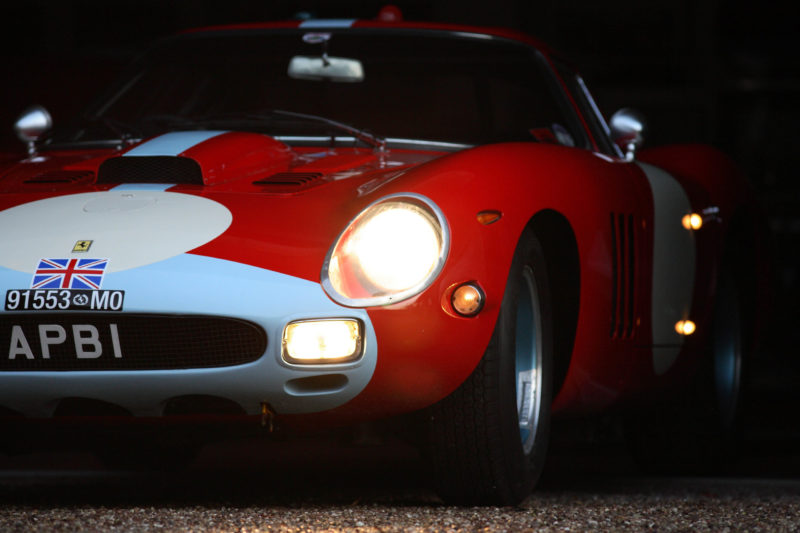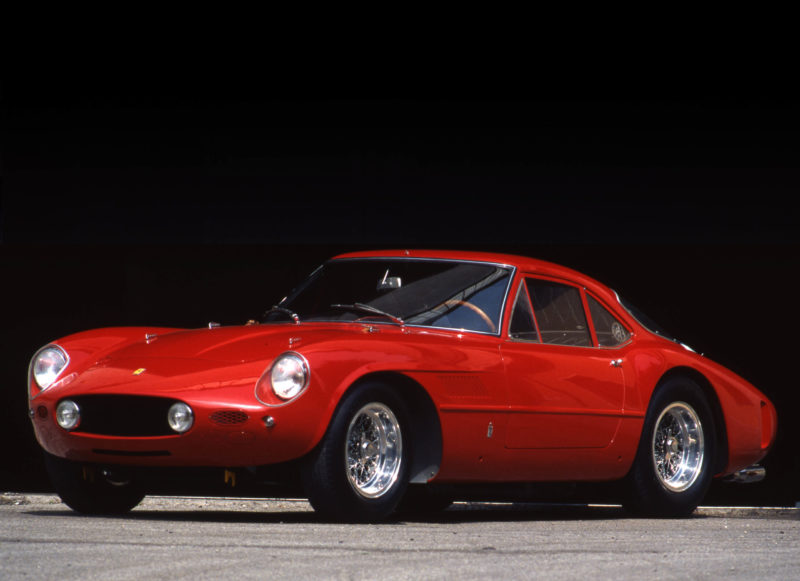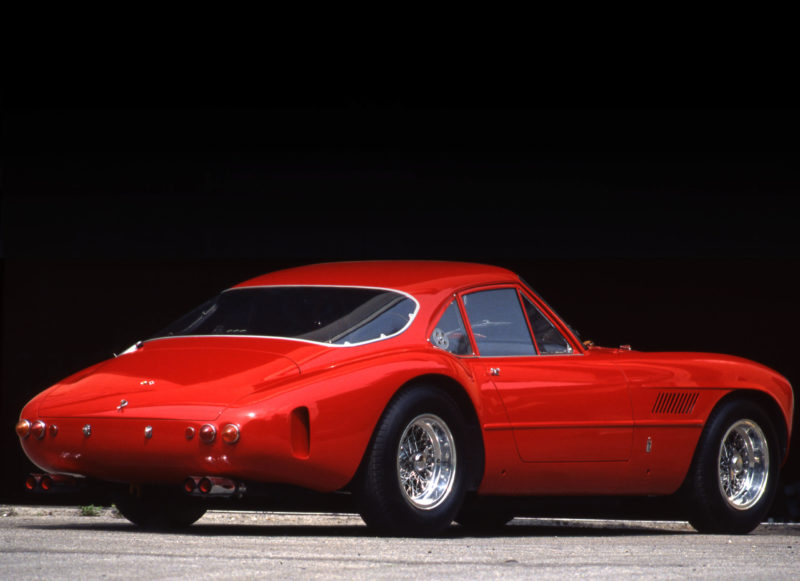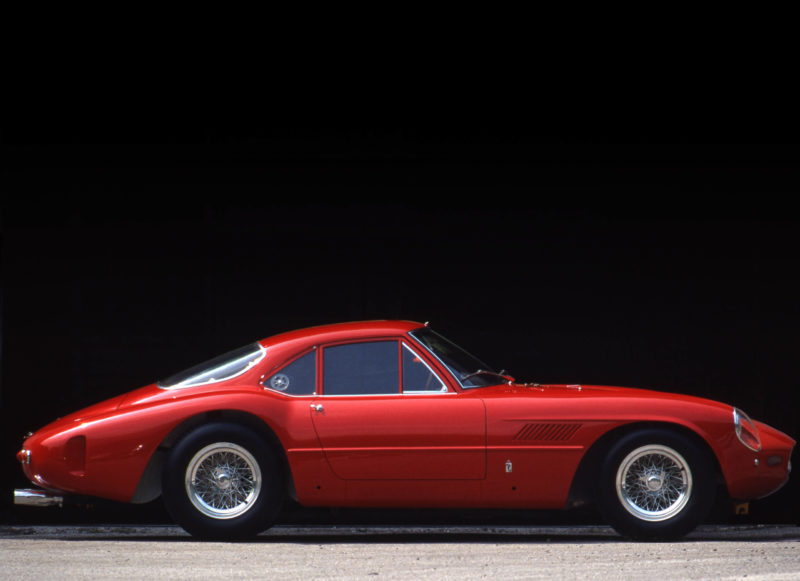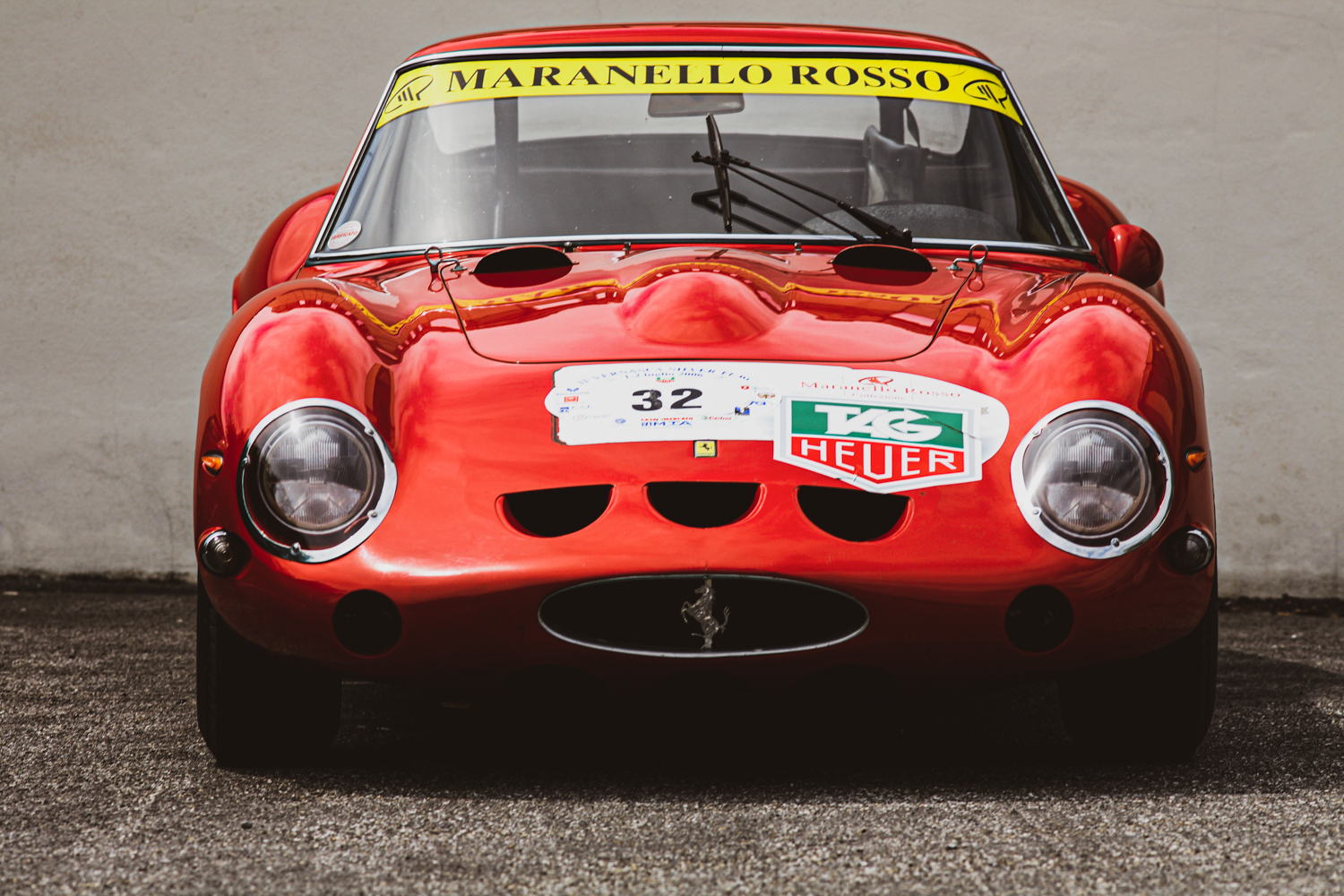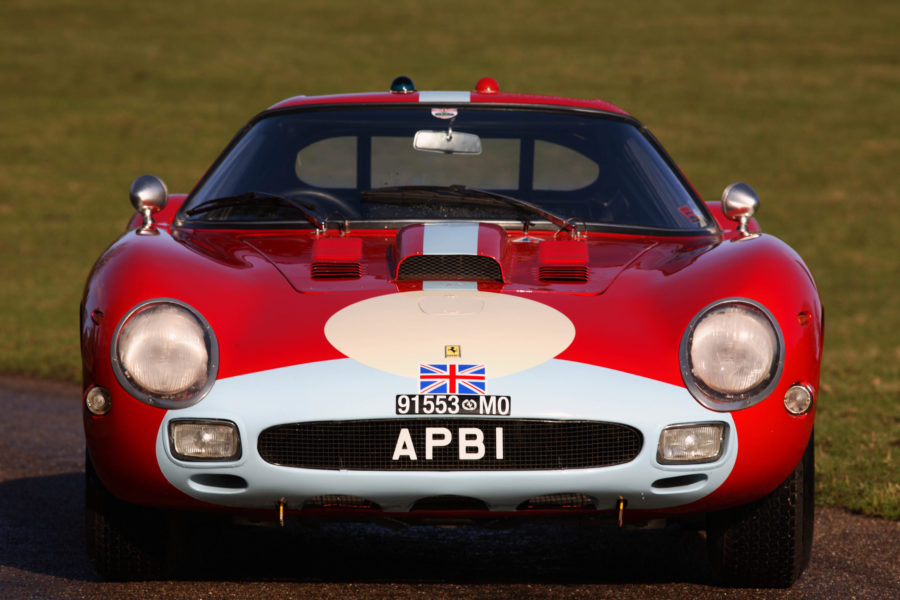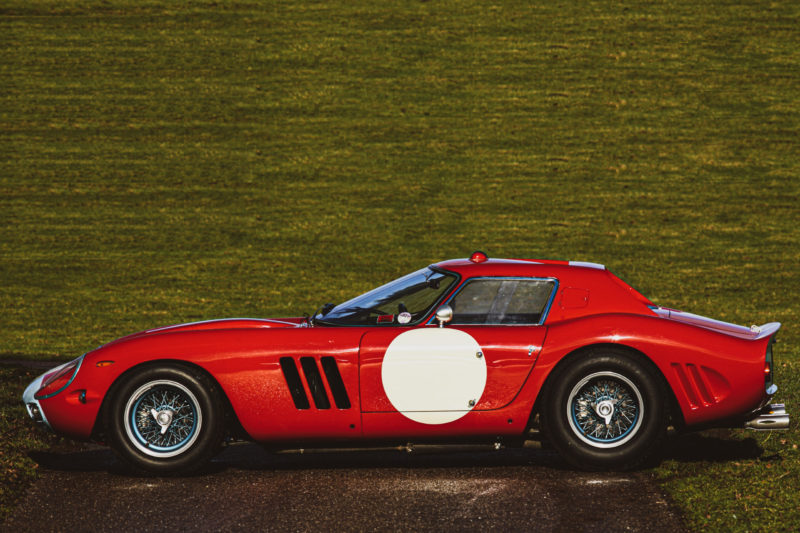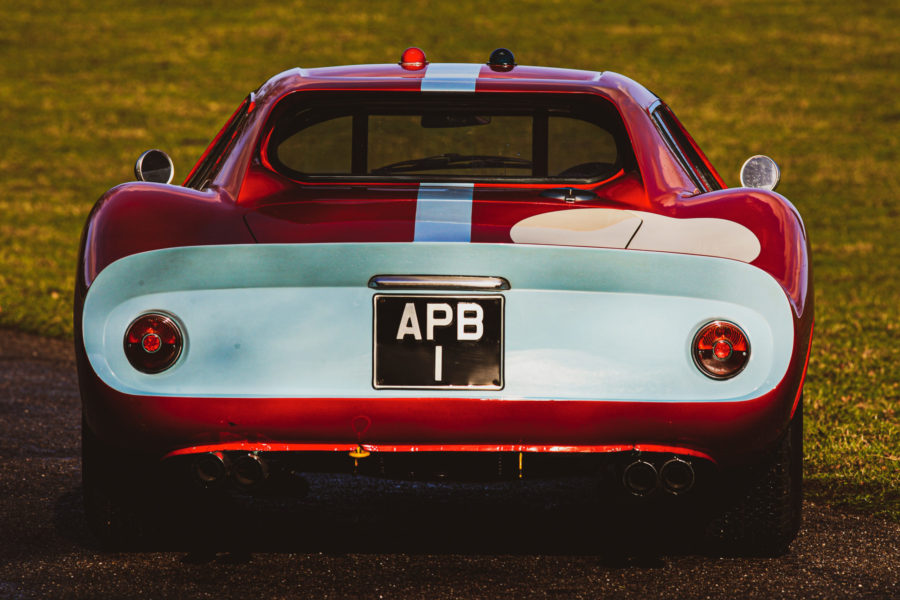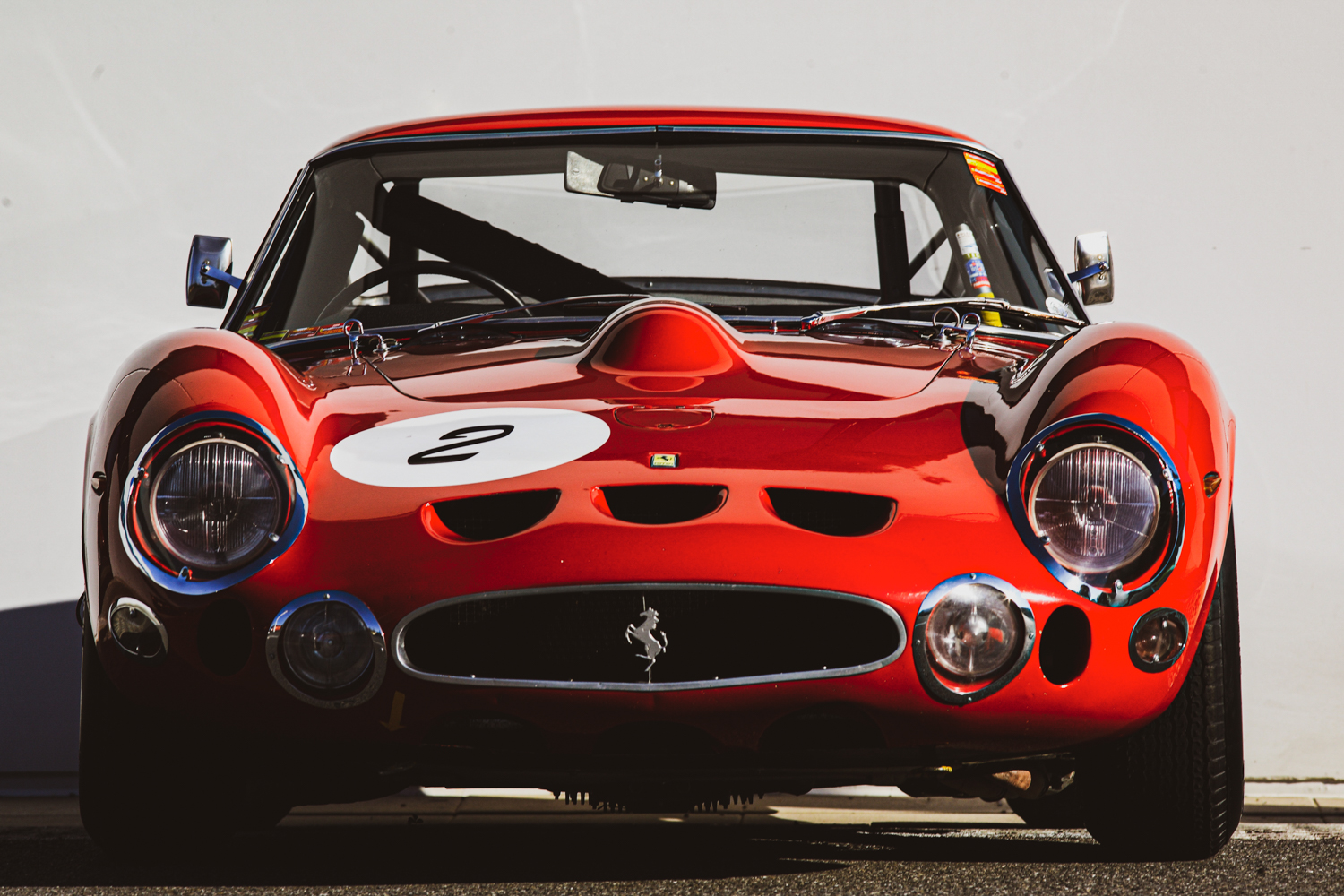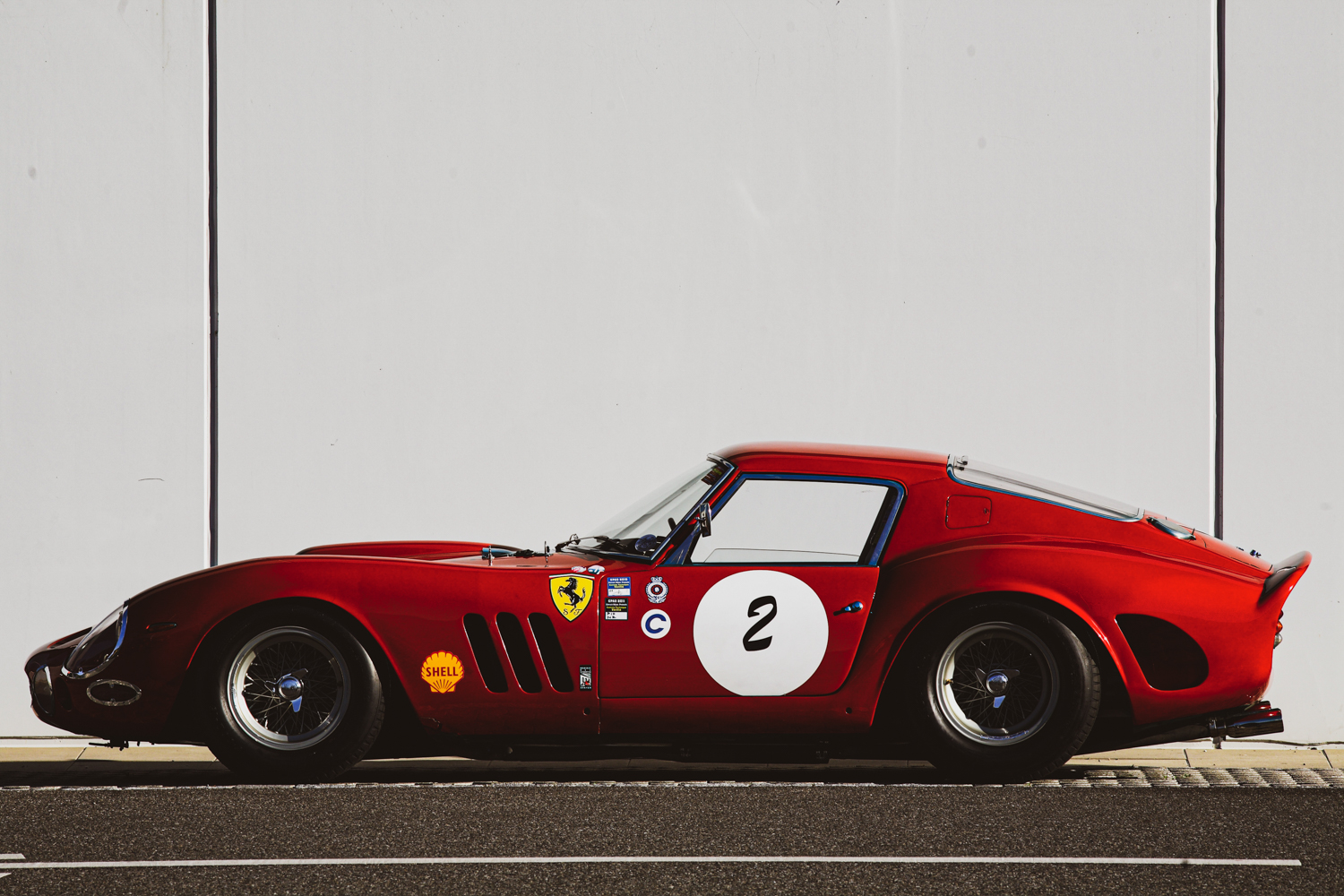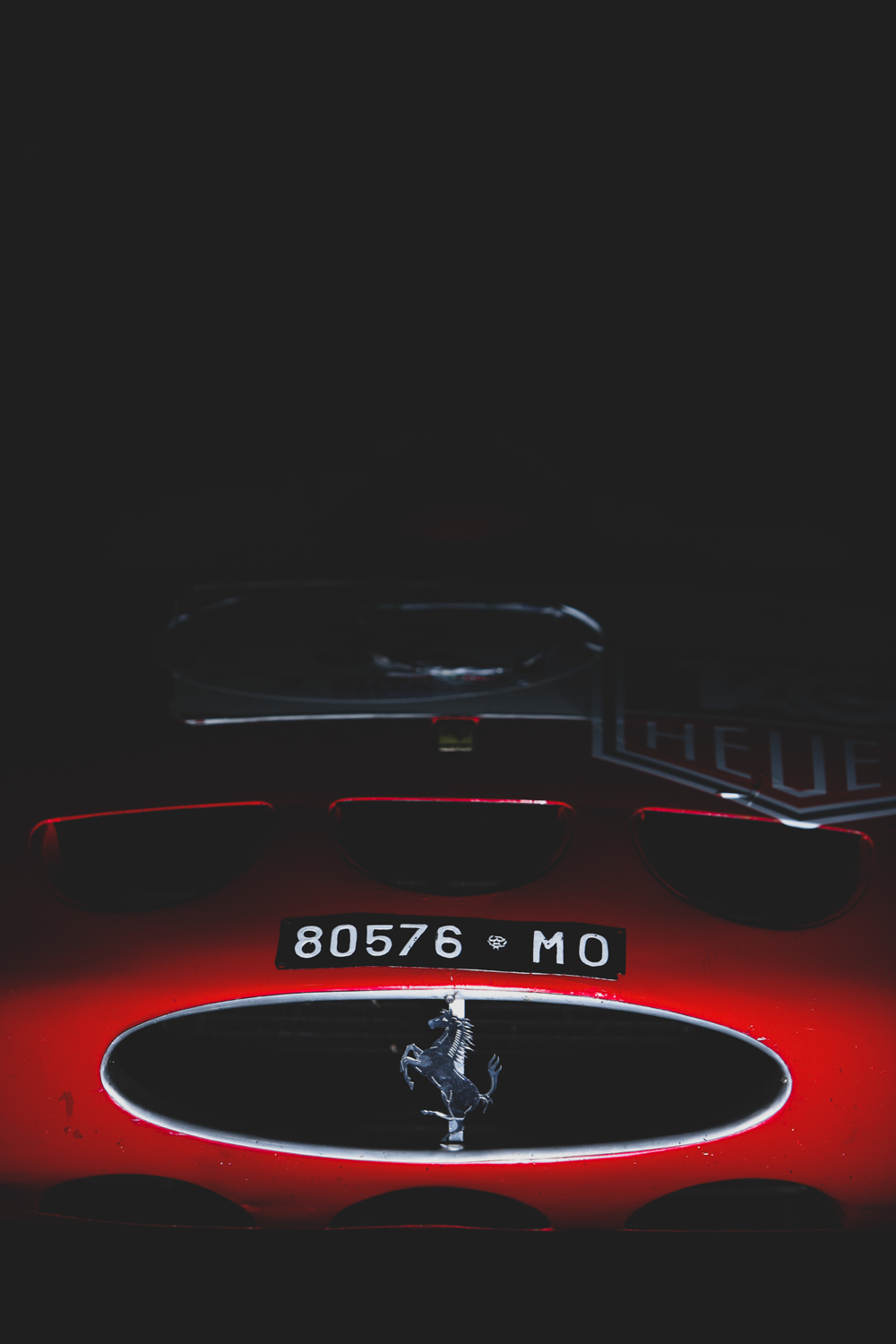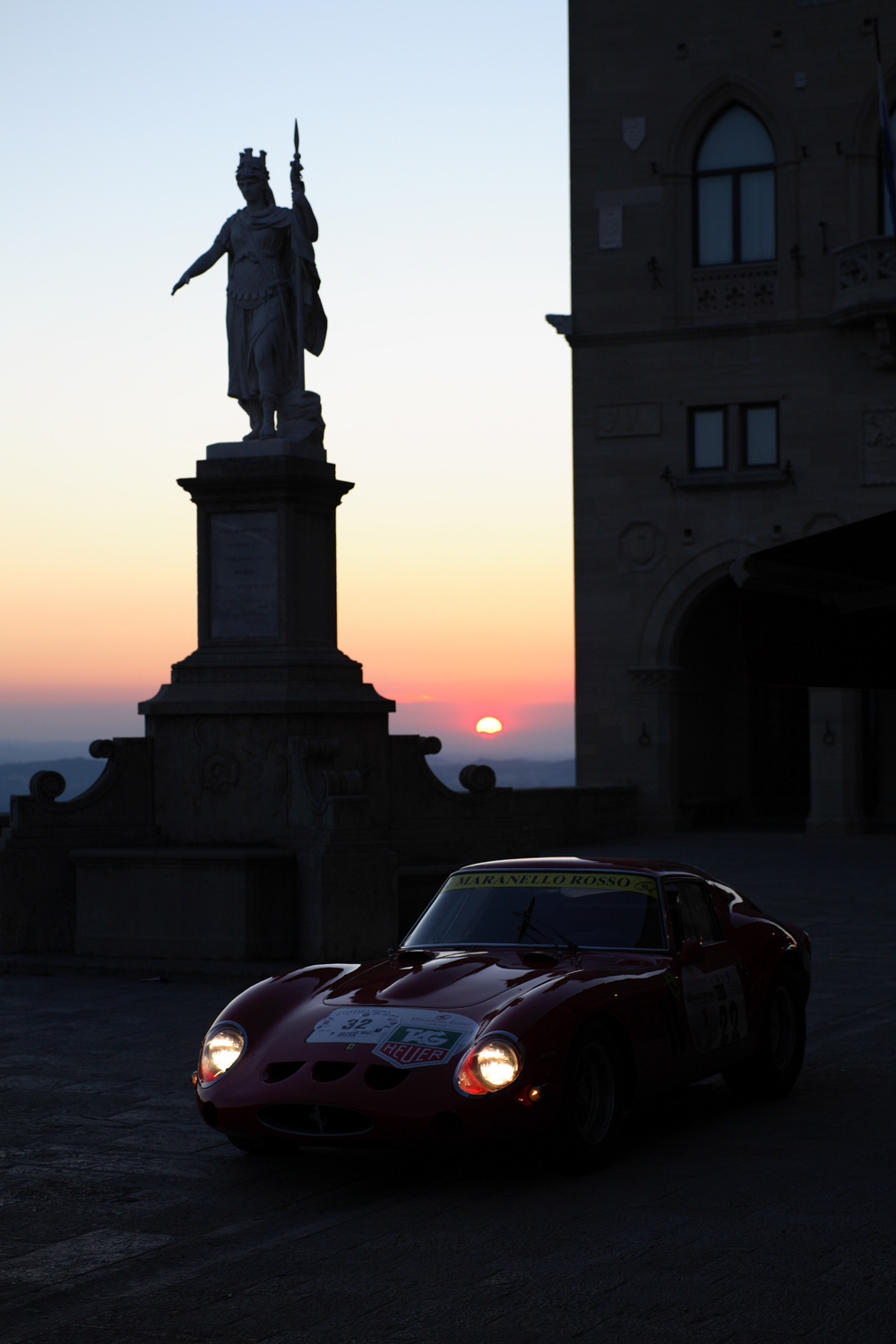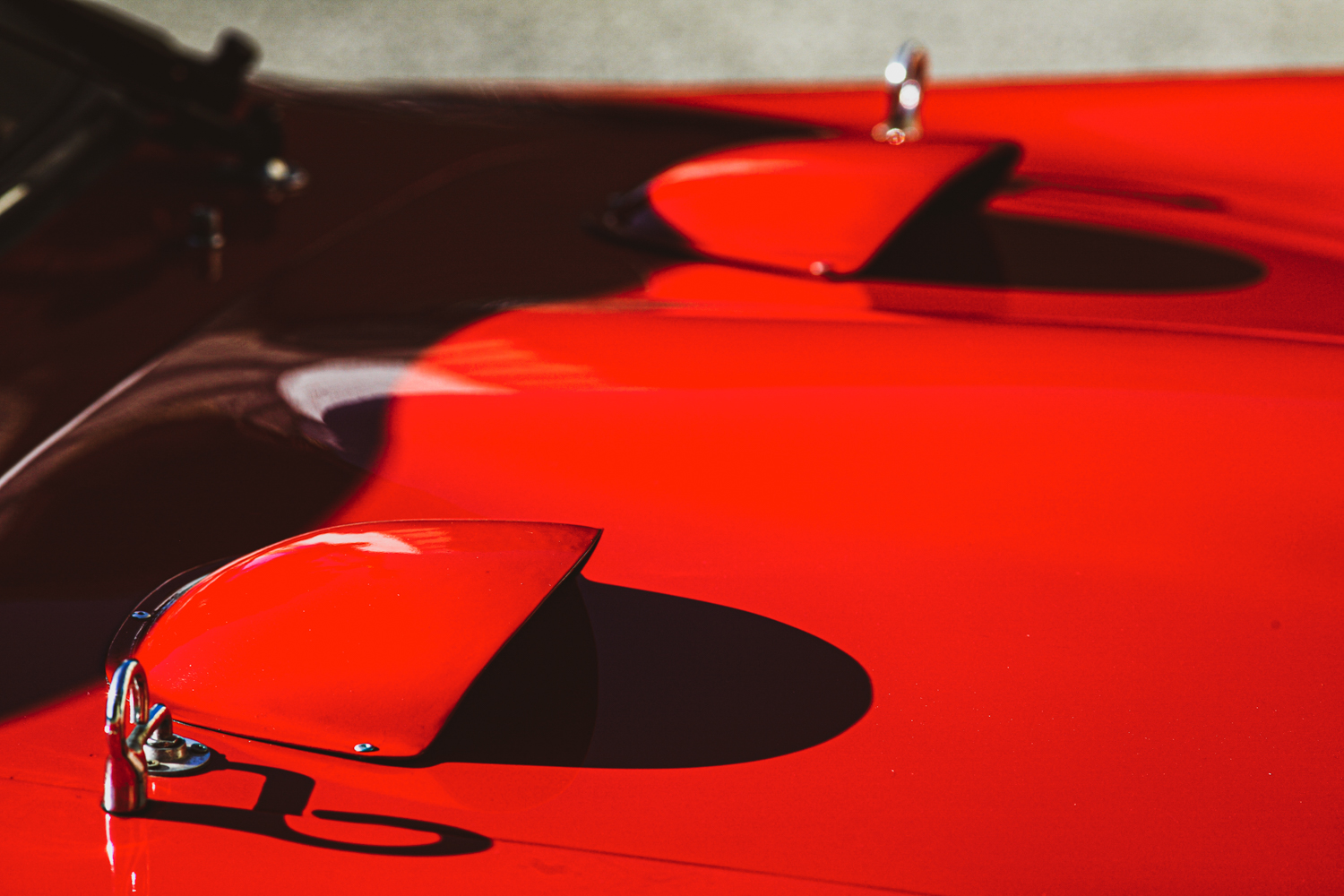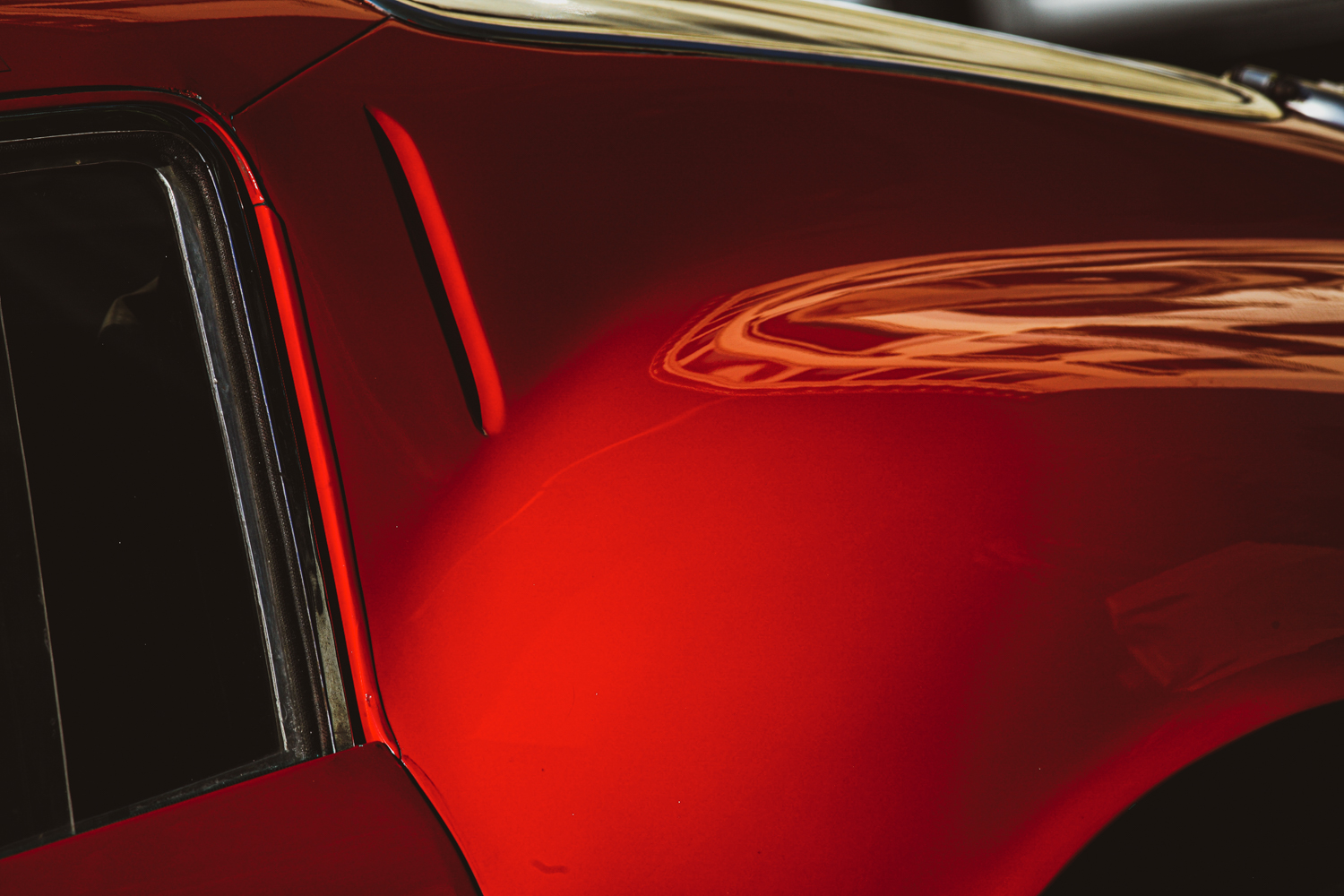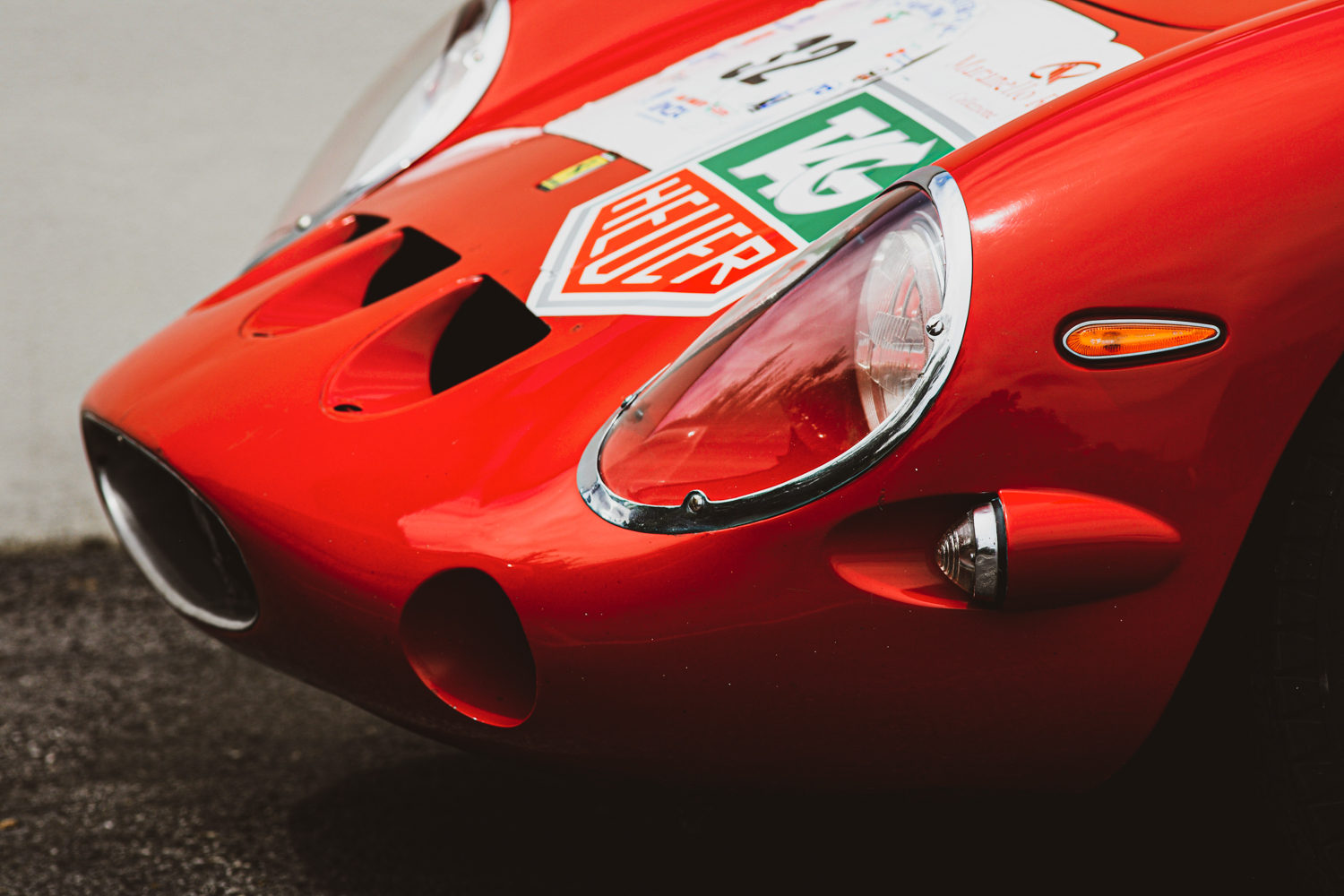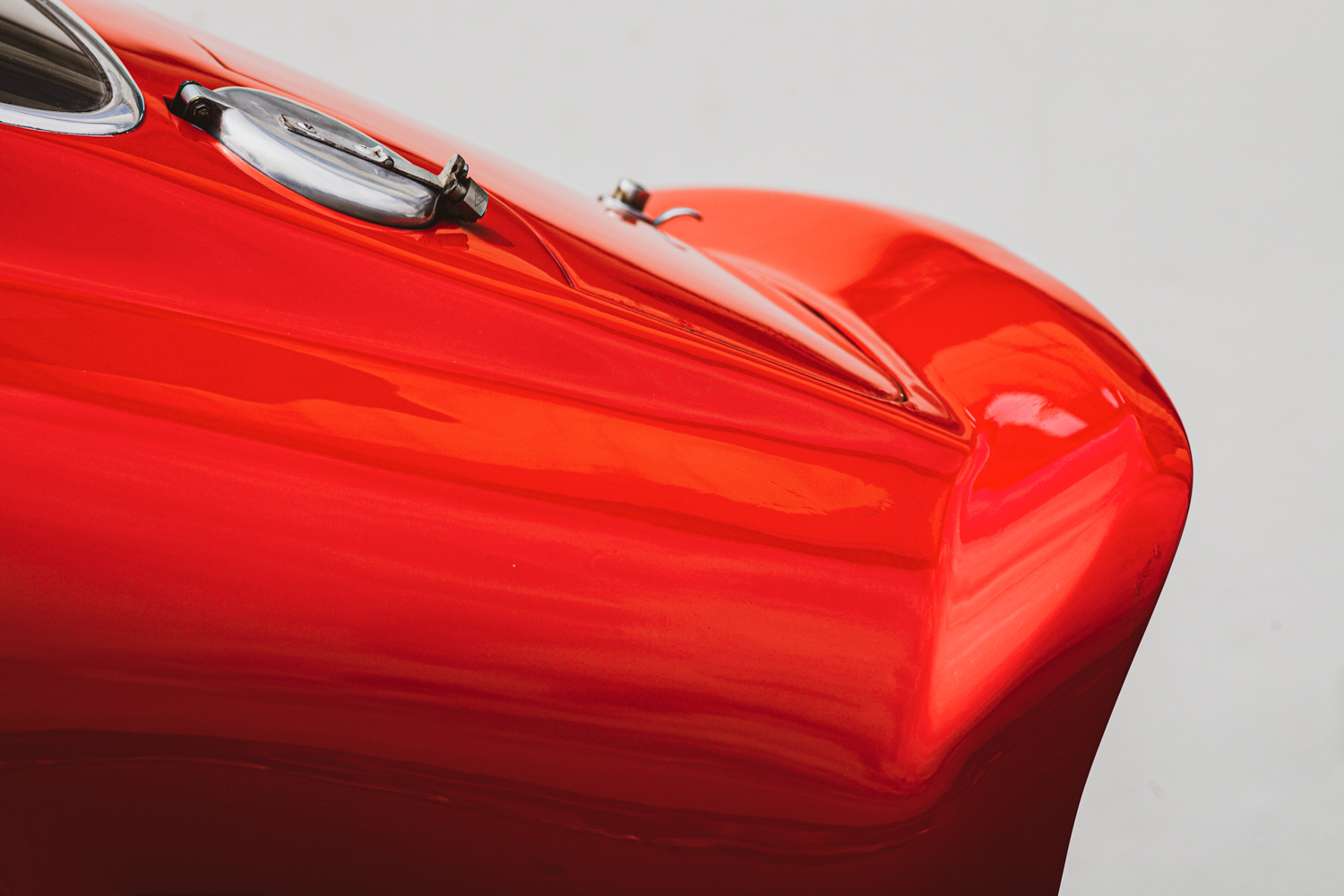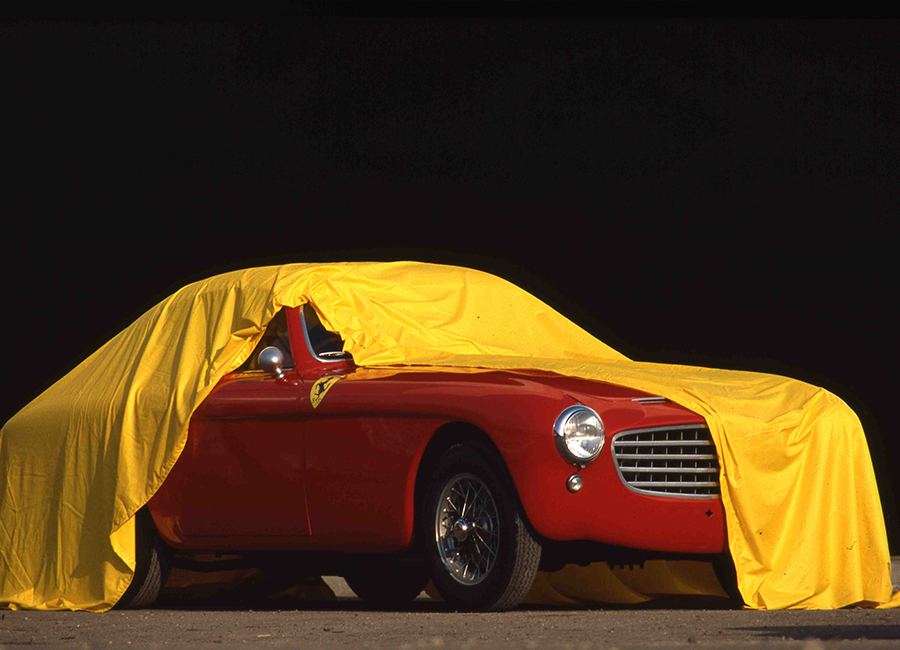GRAN TURISMO OMOLOGATO
24 March 1962: a blue metallic (with central white stripe) 250 GTO entered by Scuderia Nart and driven by Phill Hill and Olivier Gendebien, made its racing debut at 12h Sebring, winning its 3 litre GT Class and finishing 2nd Overall – this is just the first of the several successes achieved by this car conceived from Enzo Ferrari to race. Its racing long-running career has been filled by continuous triumphs in the most important races such as 24h Le Mans, 1000Km Nurgburgring, 3h Daytona Continental, 500km de Spa, Tour de France, Targa Florio, Tourist Trophy and so on.
GTO are the three most illustrious letters in Motorsport history.
A quirk was that the car should have been registered just as GT (Grand Turismo), the O – which stands for Omologato – was added later due to a script mistake. 100 cars were needed to obtain homologation for GT3 races but, with a number of loopholes Ferrari produced just 38 examples, proving them as previous 250 GT SWB upgraded and getting the approval by FIA to race. There was the hurry in Maranello to built a new car for 1962 GT racing season and, for this challenge, Ferrari entrusted the engineer Giotto Bizzarrini to conceive (in extreme secret and soon) a new car to compete at the maximum levels. For this important project, Bizzarrini asked to work in a special workshop, which could have been hidden from views – it turned out a “private” department covered with newspapers on the glass windows!
The forerunner of the GTO is a prototype built on the chassis #2643 (named 250 GT ”Sperimentale”) close to the rounded shapes of the 400 Superamerica series. This prototype painted in light cobalt blue – with three colour stripe – was tested by Scuderia Ferrari at 1961 24 Hours of Le Mans, driven by Fernand Tavano and Giancarlo Baghetti: they were forced to retire due to an engine failure. Impressions were that the car struggling with stability during the maximum speed in bends. To fix the issue was added a “duck” rear spoiler, but the instability continued, probably due to the front design, which was too high. Scuderia Ferrari entered #2643 GT Sperimentale also at the 3h Daytona Continental, with Sterling Moss at its wheel: this was the second al last race as official works-car Ferrari. The development of this first prototype was abandoned and the car sold in USA in 1962.
Meanwhile, in Maranello Giotto Bizzarrini, thanks to few technical guys and the help of Sergio Scaglietti, created the mechanical-layout and the chassis dressed by the alloy bodywork. The second prototype of the 250 GT was ready in August 1961 and tested for the first time by the F1 Ferrari driver Willy Mairesse. Then, during the weekend of the F1 Grand Prix at Monza, 10th of September 1962, Stirling Moss (at the time driving for the F1 RRC Walker Racing Team) drove it through the renowned “Parabolica” in 1,45.4 per lap – more than 1sec faster than the 250 GT SWB, the car supposed to be replaced by the GTO. This prototype was called the “Papera – duck” for its front design, featuring a long nose with three black inlets and the little mouth (the oval grille).
GTO project was almost completed when, at the end of 1961, happened something unforeseen in Ferrari. Indeed, is known as the “rivoluzione di palazzo” the event that revolutionised Maranello’s staff: Enzo Ferrari received a letter signed by managers and engineers in which the theme was the intrusive behaviour in the factory of his wife, after Dino’s death. What comes out was the firing of eight executive figures as Carlo Chiti, Romolo Tavano and also the engineer behind GTO development, Giotto Bizzarrini. After that upsetting change, Mauro Forghieri was appointed in charge of the GTO project, together with Sergio Scaglietti who built all the alloy bodyworks between 1962 and 1964.
In total were built 38 250 GTO examples, of which 36 (distinguishable as ’62 or ’64 according to the bodywork) were equipped with the 3.0-litre engine derived from the Gioacchino Colombo “short-block”. Of these cars also known as first and second series, 33 were born as 250 GTO ’62 (first series) and just three were built with the ’64 bodywork specification, which presented a different roof design – then, due to crashes or costumers request, Carrozzia Scagliatti officially retrofitted four 250 GTO ’62 with the ’64 bodywork. Two examples often referred as 330 GTO and with a modified bonnet to host the engine) were mounting the 4.0 litre designed by Engineer Aurelio Lampredi and derived from the 400 SuperAmerica.
ENGINEROUTE
GRAN TURISMO OMOLOGATO
24 March 1962: a blue metallic (with central white stripe) 250 GTO entered by Scuderia Nart and driven by Phill Hill and Olivier Gendebien, made its racing debut at 12h Sebring, winning its 3 litre GT Class and finishing 2nd Overall – this is just the first of the several successes achieved by this car conceived from Enzo Ferrari to race. Its racing long-running career has been filled by continuous triumphs in the most important races such as 24h Le Mans, 1000Km Nurgburgring, 3h Daytona Continental, 500km de Spa, Tour de France, Targa Florio, Tourist Trophy and so on.
GTO are the three most illustrious letters in Motorsport history.
A quirk was that the car should have been registered just as GT (Grand Turismo), the O – which stands for Omologato – was added later due to a script mistake. 100 cars were needed to obtain homologation for GT3 races but, with a number of loopholes Ferrari produced just 38 examples, proving them as previous 250 GT SWB upgraded and getting the approval by FIA to race. There was hurry in Maranello to built a new car for 1962 GT racing season and, for this challenge, Ferrari entrusted the engineer Giotto Bizzarrini to conceive (in extreme secret and soon) a new car to compete at the maximum levels. For this important project, Bizzarrini asked to work in a special workshop, which could have been hidden from views – it turned out a “private” department covered with newspapers on the glass windows!
The forerunner of the GTO is a prototype built on the chassis #2643 (named 250 GT ”Sperimentale”) close to the rounded shapes of the 400 Superamerica series. This prototype painted in light cobalt blue – with three colour stripe – was tested by Scuderia Ferrari at 1961 24 Hours of Le Mans, driven by Fernand Tavano and Giancarlo Baghetti: they were forced to retire due to an engine failure. Impressions were that the car struggling with stability during the maximum speed in bends. To fix the issue was added a “duck” rear spoiler, but the instability continued, probably due to the front design, which was too high. Scuderia Ferrari entered #2643 GT Sperimentale also at the 3h Daytona Continental, with Sterling Moss at its wheel: this was the second al last race as official works-car Ferrari. The development of this first prototype was abandoned and the car sold in USA in 1962.
Meanwhile in Maranello Giotto Bizzarrini, thanks to few technical guys and the help of Sergio Scaglietti, created the mechanical-layout and the chassis dressed by the alloy bodywork. The second prototype of the 250 GT was ready in August 1961 and tested for the first time by the F1 Ferrari driver Willy Mairesse. Then, during the weekend of the F1 Grand Prix at Monza, 10th of September 1962, Stirling Moss (at time driving for the F1 RRC Walker Racing Team) drove it through the renowned “Parabolica” in 1,45.4 per lap – more than 1sec faster than the 250 GT SWB, the car supposed to be replaced by the GTO. This prototype was called the “Papera – duck” for its front design, featuring a long nose with three black inlets and the little mouth (the oval grille).
GTO project was almost completed when, at the end of 1961, happened something unforeseen in Ferrari. Indeed, is known as the “rivoluzione di palazzo” the event that revolutionised Maranello’s staff: Enzo Ferrari received a letter signed by managers and engineers in which the theme was the intrusive behaviour in the factory of his wife, after Dino’s death. What comes out was the firing of eight executive figures as Carlo Chiti, Romolo Tavano and also the engineer behind GTO development, Giotto Bizzarrini. After that upsetting change, Mauro Forghieri was appointed in charge of the GTO project, together with Sergio Scaglietti who built all the alloy bodyworks between 1962 and 1964.
In total were built 38 250 GTO examples, of which 36 (distinguishable as ’62 or ’64 according to the bodywork) were equipped with the 3.0 litre engine derived from the Gioacchino Colombo “short-block”. Of these cars also known as first and second series, 33 were born as 250 GTO ’62 (first series) and just three were built with the ’64 bodywork specification, which presented a different roof design – then, due to crashes or costumers request, Carrozzia Scagliatti officially retrofitted four 250 GTO ’62 with the ’64 bodywork. Two examples, often referred as 330 GTO and with a modified bonnet to host the engine) were mounting the 4.0 litre designed by Engineer Aurelio Lampredi and derived from the 400 SuperAmerica.
ENGINEROUTE




